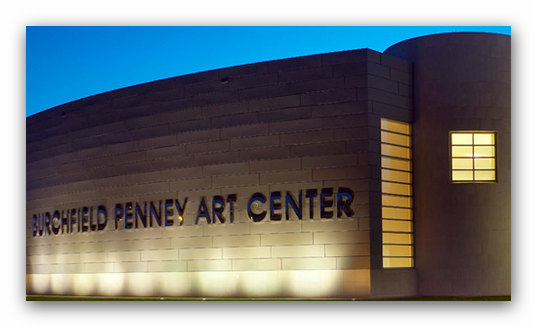Oct 14 2016 - Jun 25 2017
Buffalo, NY
At the pinnacle of his career, Charles Cary Rumsey died tragically in an automobile accident in 1922. Had he lived longer, his name might very well be among those best remembered for classical figure and animal sculptures transitioning into a modernist aesthetic. From his early showing at the Pan-American Exposition in 1901 to securing mammoth public commissions with the architectural firm that built the New York Public Library and Manhattan Bridge, Rumsey was sought after as a sculptor whose work expressed the ideals of early 20th-century America.
In addition to his art, Rumsey was also a consummate equestrian, representing the United States in the burgeoning sport of polo. Understanding his place in the cultural history of Western New York, New York City, and beyond is made possible by the resources at the Burchfield Penney Art Center, comprised of the largest collection of his sculptures and studies, as well as artifacts and archival materials that provide insights into his career. This exhibition illustrates different aspects of Charles Cary Rumsey’s life as an artist, World War I soldier, athlete, and descendant of two of the most influential families in Buffalo during the gilded age. Intriguing evidence uncovered by literary researcher Michael E. Workman, Ph.D. suggests numerous parallels between Rumsey and the fictional character, Jay Gatsby, in F. Scott Fitzgerald’s novel, The Great Gatsby, published in 1925. Fitzgerald had been a boyhood friend during the few years his family lived in Buffalo, and the two reconnected as adults, after Rumsey had moved to Long Island.
He was surrounded by artistically talented and entrepreneurial leaders in both the Cary and the Rumsey families. ... Rumsey’s ideal education included a teenage apprenticeship in Paris with the American expatriate sculptor Paul Weyland Bartlett (1865-1925), followed by studies at The Nichols School in Buffalo, Harvard University, and the Museum of Fine Arts in Boston. He returned to Paris to study at the Academies Julian and Colarossi, where his chief advisor was the famous animalier (animal sculptor) Emmanuel Fremiét (1824-1910), whose famous public sculptures include the gilded Fame with Pegasus that adorns the northeastern pylon of the Pont Alexandre III. [...]
See museum website for more on Charles Cary Rumsey.
Credit: Exhibition overview from museum website.
Exhibition Venues & Dates
Oct 14 2016 - Jun 25 2017
Buffalo, NY
